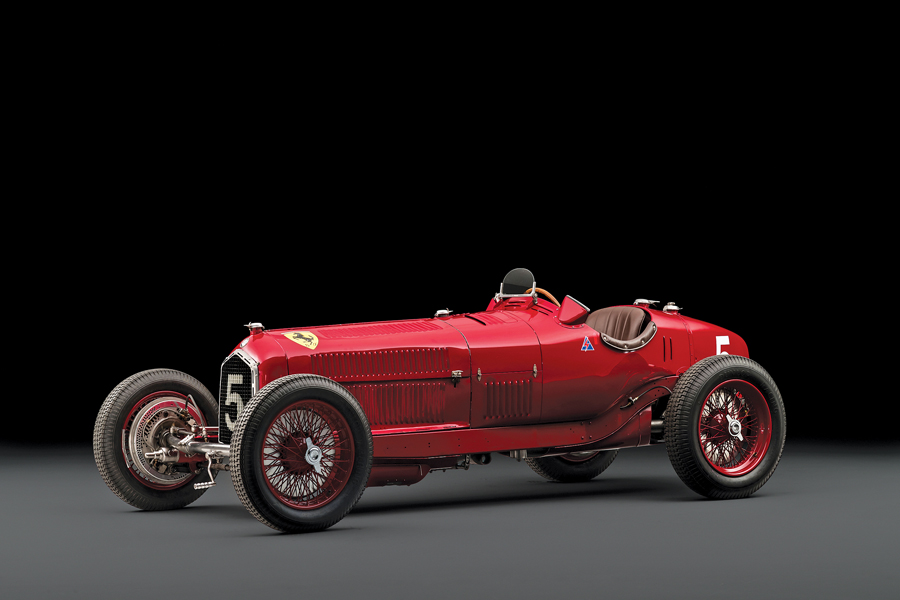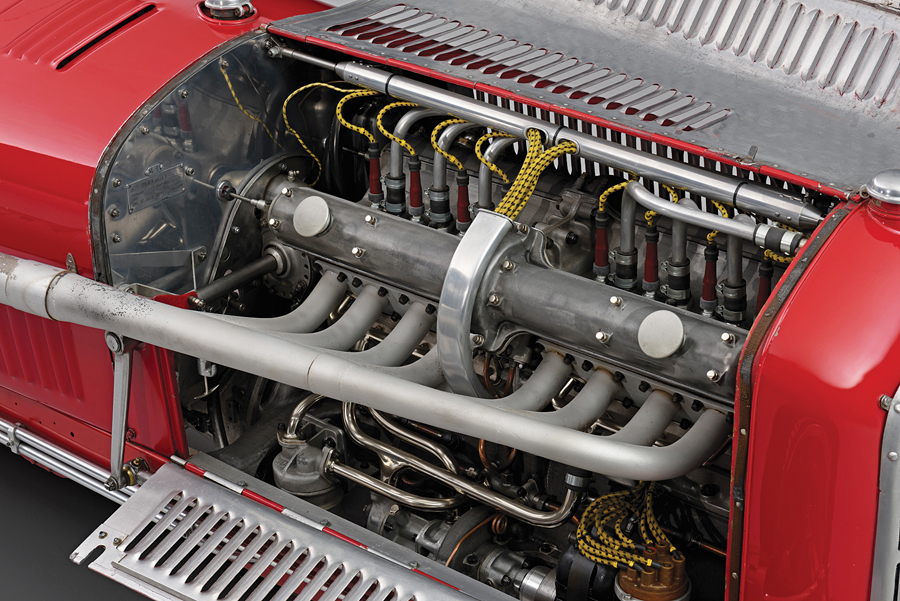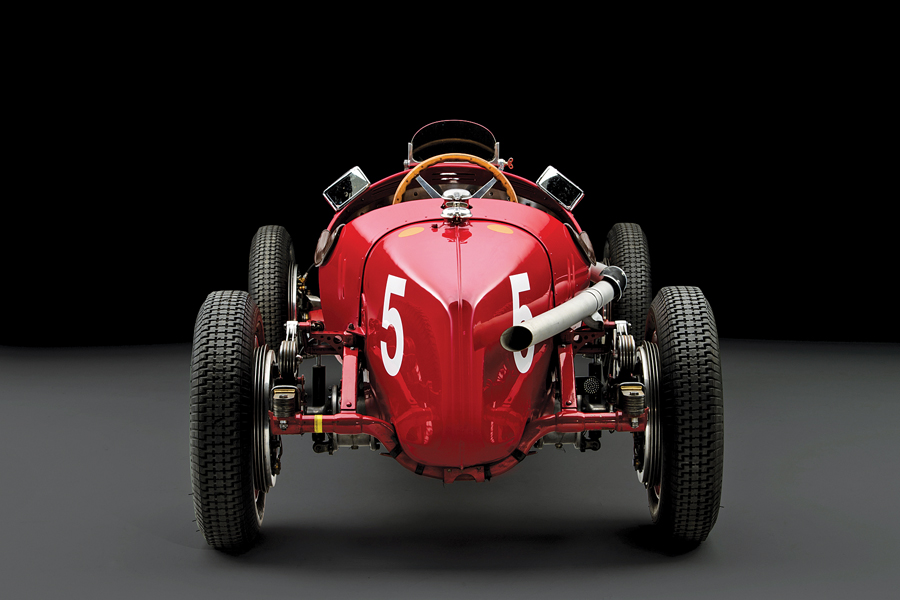SCM Analysis
Detailing
| Vehicle: | 1934 Alfa Romeo Tipo B P3 |
| Years Produced: | 1932 and 1934 |
| Number Produced: | Six Series 1 (1932) cars and seven Series 2 (1934) cars |
| Original List Price: | N/A |
| SCM Valuation: | $2,788,500 |
| Chassis Number Location: | Right rear chassis and plate on firewall |
| Engine Number Location: | Right side rear mounting leg |
| Club Info: | Alfa Romeo Owners Club |
| Website: | http://www.aroc-usa.org |
| Alternatives: | 1931–33 Maserati 8C 3000/8CM, 1934 Bugatti Type 59, 1931–34 Alfa Romeo 8C 2300 Monza |
| Investment Grade: | A |
This car, Lot 161, sold for $4,180,680, including buyer’s premium, at RM Sotheby’s Rétromobile auction in Paris, France, on February 8, 2017.
I know this car very well. My company cared for it, maintained it, supported the owner’s racing and generally loved the car for roughly seven years. When it came time, I arranged for its sale to Europe and very regretfully sent it to the new owner. It remains one of my all-time favorite pre-war cars.
From the beginning, auto racing has been an essential part of Alfa Romeo’s DNA, but it has to be acknowledged that in the very early days they weren’t very good at it.
Into the early 1920s Alfas generally fared poorly against their archrival from the west, Fiat, who seemed to have a better understanding of how to make cars fast and easy to drive.
Nicola Romeo, the industrialist financier who controlled Alfa, took a pragmatic view of resolving this: poach engineering talent from Fiat. Thus, in late 1923, a very young engineer named Vittorio Jano stepped off the train from Turin and took over the race engineering role at Alfa Romeo. Although he was just 23, Jano was extraordinarily gifted, and in 1925 his first Grand Prix racer (a supercharged 2-liter straight eight called the P2) won the first formal world championship for Alfa — the laurel surrounding the Alfa insignia commemorates this victory.
For 1926, the GP formula was reduced to 1.5 liters, and Alfa, struggling as usual with financial difficulties, chose to not build a new car for the series. Jano was set to developing a new series of sporting cars that became the 6C and later the famous 8C Alfas.
The early days of European racing
I need to spend a few minutes discussing the development of European auto racing, so that the context surrounding our subject P3 Alfa makes sense. In the early days, racing an automobile required two people: a driver and a riding mechanic to keep fuel pressure up and deal with problems (even changing a tire took two people).
The riding mechanic was dropped in 1925, but the 2-seat format remained. By definition, a touring car had four seats, and anything with only two was considered a racer. The idea of a monoposto (single-seater) was imported from the United States during the late 1920s, but the cars weren’t allowed in European racing until 1931.
There was an attempt at common rule-making, with an organization called the AIACR (predecessor to today’s FIA), but it was weak. Individual race promoters and clubs made most of the rules for their events, although a displacement limit for Grand Prix racing was observed at 3 liters from 1920 to ’22 and 2 liters from 1923 to ’25. They tried to drop it to 1.5 liters for 1926, but it failed to catch on.
By 1927, everyone was racing “Formula Libre” with no real rules. Over the next few years this devolved into a horsepower war, with 7-liter Mercedes, V16 Maseratis and 5-liter Bugattis fighting for the wins. The AIACR gradually reasserted authority over racing, and in 1934, it managed to convert Formula Libre to the “750 kg” formula, which limited maximum weight to 1,650 pounds — on the theory that it would keep the cars relatively small and safe.
History didn’t play out that way, but it was a try.
Back on the track
Through the late 1920s, Alfa didn’t exactly abandon racing. They sold the remaining four P2 racers to individual drivers and supported them with the competition department as best they could. At the end of 1929, they bought the four cars back and tried to upgrade them to be competitive for 1930. This didn’t work out very well, but the factory was back in the racing business.
For the 1931 season, Alfa introduced the now-iconic 8C 2300 Spyder Corsa at the Mille Miglia. As a 2-seater, it was considered a pure racing car. It proved to be a superb racer, but it didn’t have the horsepower for the Grand Prix wars.
For that, Jano came up with a very innovative concept called the “Tipo A.” The car used two 6C 1750 engines and transmissions set side by side to drive the rear wheels. Although it was very fast, the Tipo A proved complicated and difficult, and it was quickly abandoned.
For Vittorio Jano, it was obvious that a successful future required the simplicity and nimble lightness of the 8C 2300 — but with a lot more horsepower.
This is precisely what he created for 1932 in the “Tipo B” — later known as the P3. The 8C architecture was retained, but the engine was expanded to 2.6 liters with “testa fissa” (unitary head/block) cylinders and two superchargers to supply an alcohol fuel for maximum horsepower.
The drivetrain placed the differential right behind the transmission, with two angled drive shafts in a V, one driving each rear wheel. The body was very narrow and placed the driver alone in the center — it was the first European monoposto and the archetype of the Grand Prix car of the future. It won its first time out at the Italian Grand Prix. Along with the Second Series cars built to the 750-kg rule in 1934, it was the dominant Grand Prix car until the German juggernaut took over in 1935.
Rare, iconic — and relatively inexpensive
It is an interesting irony that the Alfa P3, easily the most rare and arguably the most iconic racing Alfa Romeo of the pre-war years — it was also the fastest and had many great drivers — should also be the least valuable. An Alfa P3 is generally worth between half to a quarter of its racing 8C 2.3 brothers. Why is this?
The short answer is that it was a Grand Prix car rather than a sports racing car, and thus much harder to enjoy. The others can be taken on tours or Sunday drives, but the P3 is pretty much limited to the track — and even then it is an intimidating beast.
How intimidating? Let us count the ways:
First, this is a bloody fast car. With 250 to 300 horsepower on tap and about 1,600 pounds of mass, it is easily capable of 150 mph or more.
Second, this car has absolutely no provisions for safety. If something goes seriously wrong, you are all alone up on top of the car — and depending on luck as to how it turns out.
Third, there is no effective way to drive it except flat-out. It has a flexible, cart-sprung chassis, so if you approach a corner carefully, the frame will twist, loading up the outside front and lifting the inside rear tire, and you will plow through slowly, looking and feeling horrible.
The best technique is to charge in hard and fling the car into the corner way early. With all four tires sliding, the frame straightens back out and you can use the horsepower to drive the car toward the apex as you slide past — a classic dirt-track slide. It is wonderful fun and the car loves to do it, but it is emphatically not for the timid. And, as mentioned earlier, if something goes wrong….
Money and courage required
People who can afford to write really big checks — and are willing (and able) to drive a valuable old racing car like a demonic 25-year-old — are thin on the ground. So the market for a car of this nature has been limited, particularly in recent years.
During the 1980s, P3s were considered the holy grail of collecting, similar to GTOs, but they never took off. Instead, they appreciated slowly.
As far as I know, every successive owner of this car for the past 30 years has loved it dearly, had a wonderful time being involved with it, and has seen a reasonable if unspectacular financial return to justify having made the commitment. Although these are tough cars to sell, they are wildly important and fun — and will remain so. Fairly bought. ♦
(Introductory description courtesy of RM Sotheby’s.)


